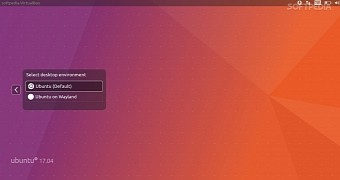Key Points
- OpenStack has become the leading open-source cloud platform due to advancements in installation and orchestration tools.
- Projects like Sunbeam and Kolla Ansible are making OpenStack easier to use and manage, similar to a regular application.
- Canonical’s approach to integrating Sunbeam with MAAS (Metal-as-a-Service) highlights the importance of hardware automation for scalable cloud deployments.
Ubuntu Insights: Streamlining OpenStack Cloud Deployments with Sunbeam and MAAS
The world of cloud computing has witnessed a significant shift in recent years, with OpenStack emerging as the go-to open-source cloud platform. This surge in popularity can be attributed to the rapid development of installation and orchestration tools that have revolutionized the way OpenStack is deployed and managed. Notably, projects like Sunbeam and Kolla Ansible have been instrumental in transforming OpenStack into a more accessible, user-friendly application. By leveraging containers and microservices architecture, OpenStack now seamlessly integrates with the Cloud-Native Computing Foundation (CNCF), reducing entry barriers and simplifying post-deployment operations.
However, as OpenStack deployments grow in scale and complexity, a new set of challenges emerges – managing the underlying hardware that powers these cloud infrastructures. This is where hardware automation becomes indispensable. In a recent demonstration, Canonical, the company behind Ubuntu, showcased its proven approach to setting up an OpenStack cloud using Sunbeam in conjunction with MAAS (Metal-as-a-Service). This integration underscores the critical role of automation in deploying cloud infrastructure at scale.
The Significance of Sunbeam and MAAS Integration
For Linux and Ubuntu users, as well as the broader open-source community, this development is particularly relevant. Sunbeam‘s ability to simplify OpenStack deployments, combined with MAAS‘s expertise in bare-metal server provisioning, offers a powerful solution for organizations seeking to build and manage large-scale cloud infrastructures efficiently. This integration not only reduces the complexity associated with hardware management but also accelerates the deployment process, allowing users to focus on innovation rather than infrastructure setup.
Why This Matters to You
- Open-Source Enthusiasts: This advancement showcases the power of collaborative development in the open-source sphere, highlighting how projects like OpenStack, Sunbeam, and MAAS come together to address real-world challenges.
- Ubuntu and Canonical Ecosystem Users: The seamless integration of these tools within the Ubuntu ecosystem reinforces Canonical’s commitment to providing comprehensive solutions for cloud deployments, further solidifying Ubuntu’s position in the cloud computing landscape.
- IT Professionals and organizations: The emphasis on hardware automation serves as a reminder of the importance of adopting scalable, efficient practices when managing cloud infrastructure. By leveraging tools like MAAS and Sunbeam, teams can significantly reduce operational overhead and enhance their overall cloud management capabilities.
As the demand for robust, scalable cloud solutions continues to grow, the importance of streamlined deployment processes and hardware automation cannot be overstated. Canonical’s demonstrated approach with Sunbeam and MAAS not only addresses current challenges but also sets a precedent for future innovations in cloud infrastructure management. Whether you’re a seasoned developer, an IT administrator, or simply an observer of the tech landscape, one thing is clear: the future of cloud computing is not just about the software; it’s also about how effectively we can manage the hardware that powers it. Explore how these tools can transform your cloud deployment strategy and stay ahead in the ever-evolving world of open-source cloud computing.
Upgrade your life with the Linux Courses on Udemy, Edureka Linux courses & edX Linux courses. All the courses come with certificates.








